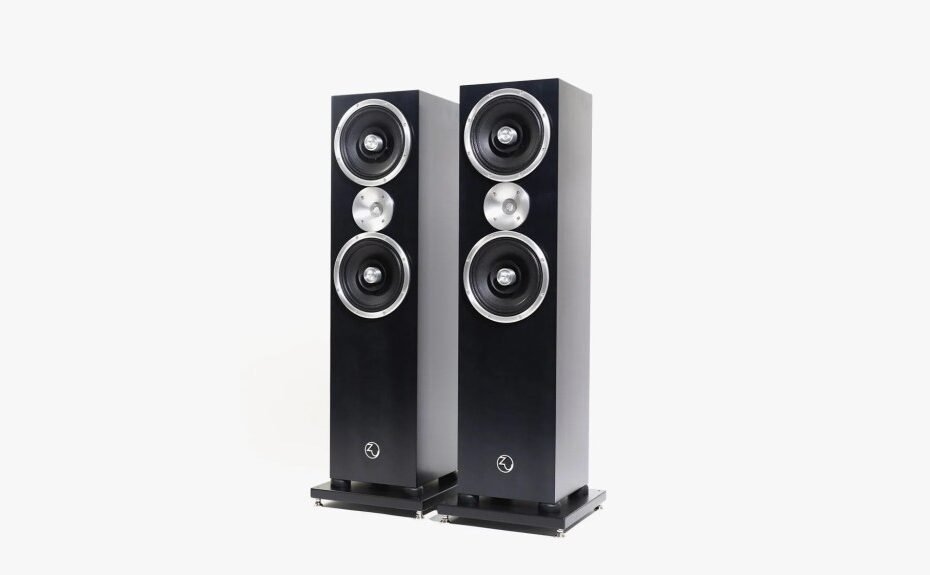Passive loudspeakers may not represent the future of home hi-fi but they still sound damn good.
Zu Audio
In the Bluetooth age, passive loudspeakers no longer represent the future of home audio. But before you stick a fork in the category, let’s take stock, shall we?
Passive loudspeakers still generate billions of dollars in revenue every year; they also deliver superior sound quality at both ends of the price spectrum.
Dozens of companies around the world remain carrying the torch, including a small handful in the U.S. These brands’ products offer world-class levels of transparency and resolution that could make you rethink how a loudspeaker is supposed to sound.
Magnepan
Magneplan
Magnepan is an audio company based in White Bear Lake, Minnesota, that has been manufacturing full-range planar loudspeakers for a half-century.
Its planar magnetic loudspeakers — which utilize very low mass, razor-thin film ribbon drivers — have a specific dipole design; there’s no speaker cabinet and the sound radiates from the back and front of the loudspeaker. The effect is that the sound has a level of openness and transparency that you don’t hear from conventional loudspeakers.
Magneplanar speakers utilize a full-range ribbon tweeter and quasi-ribbon driver to reproduce the entire frequency spectrum of sound; the trade-off is that the panel needs to be larger to accurately reproduce mid- and low-bass information. And you shouldn’t expect subterranean bass from this type of driver. Magneplanar speakers are known for their resolution, speed, clarity, and the illusion of soundstage depth and height. They require space (a minimum of 2-to-3 feet from the wall to allow their sound to really open up) and a very powerful amplifier to work properly; 100-200 watts at a minimum.
Magnepan’s loudspeakers can be surprisingly affordable by high-end standards; the .7 and 1.7i full-range models start at $1,995 but the newer LRS+ (Little Ribbon Speaker) clocks in at less than $1,000.
Spatial Audio Lab
Spatial Audio Lab
Based in Utah, Spatial Audio Lab is perhaps best known for its open-baffle loudspeakers that have turned a DIY concept into an innovative piece of industrial design; the speakers not only look sleek and expensive but sound impressive as well.
Open baffle loudspeakers have always had a big following in the DIY audio community; the absence of a cabinet that can negatively interact with the room and drivers and the ability to experiment with a combination of driver technology are just two of the advantages.
The disadvantages include not sounding great in smaller rooms, the need for a relatively large baffle and not being very forgiving of bad recordings. The reality is that very few manufacturers have succeeded in bringing this type of loudspeaker to market in a way that most people would consider them for a living room or den.
Spatial Audio Lab builds and assembles its products in-house. The speakers boast layers of resolution and impressive low-end performance. And their high sensitivity allows them to work with low-powered tube amplifiers, and even moderately powered integrated amplifiers. Their neutral sounding tonal balance makes them a good loudspeaker to experiment with if you want to compare the differences between solid state and tube amplification and they are very spacious sounding.
Give them enough space and drive them with quality amplification and you may not understand how a pair of floor-standing loudspeakers can disappear in a room like a pair of the world’s best bookshelf loudspeakers.
Zu Audio
Zu Audio
If Magnepan represents the old guard of American high-end audio, Zu Audio is new money. Based in Utah like Spatial Audio Lab, the company focuses on full-range single-driver loudspeakers housed in beautifully finished cabinets that don’t require a lot of power.
Zu’s product range is comfortable with 5 – 400 watts of power, but your choice of solid-state, tubes or class D amplification will have a significant impact on the final sound.
Zu’s speakers create a wall of sound that flesh out great sounding recordings with midrange punch and a lot of detail; which can also be too much of a good thing with bad ones. A small nitpick is that they are sensitive to placement. A few inches in either direction can have a significant impact on the sound.
